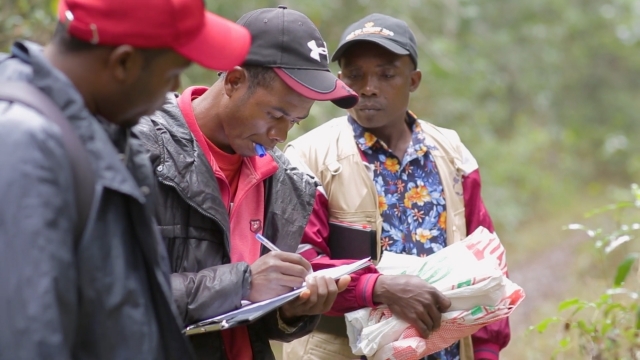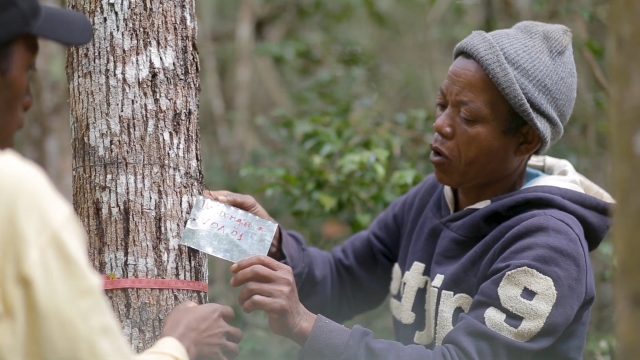
In forest restoration efforts in Madagascar, one crucial step plays a determining role in the success of reforestation: phenological monitoring. This scientific approach, combining observation and rigor, not only helps deepen our understanding of local plant species, but also optimizes the production of seedlings in nurseries. At the heart of this strategy are the mother trees, true sources of life for a forest in the making.
In a forest restoration context, phenological monitoring involves observing the cyclical events in the life of mother trees directly in the field, within their natural environment. “This monitoring allows us to identify the ideal time to collect seeds, sow them in nurseries, and thus achieve a high germination rate,” explains RAHOLIARIMANANA Felana Sauger, Restoration Leader at Madagasikara Voakajy.
Selecting the right species
Even before planting begins, it is essential to carefully select the plant species for restoration. To do this, technicians rely on several criteria based on data from floristic inventories. They prioritize endemic species of Madagascar, which are found nowhere else in the world, as well as species that are useful or used in the daily lives of local communities. Also selected are threatened species, based on their conservation status, trees with a diameter at breast height (DBH) greater than 10 cm, and healthy, undamaged plants.
These criteria allow for the targeting of species with high ecological and social value, while ensuring their suitability to the restoration site.
The essential role of mother trees
Mother trees are healthy, mature trees from which seeds or wildings are collected. Their selection is far from random: they must best represent the genetic characteristics of the species and be capable of passing on their vigor to the next generation of seedlings.
Monitoring these trees also helps avoid unnecessary seed collection. “Thanks to phenology, we know when a tree is flowering and when seeds are ready to be harvested. This prevents wasting time and resources,” adds RAHOLIARIMANANA Felana Sauger.
Forest restoration is therefore not just about planting trees. It begins much earlier, with a detailed understanding of the life cycle of species, their usefulness, rarity, and ecological behavior.
This long-term vision is at the core of the Nursery Exchange Project, founded by Darwin Initiative, which places phenological monitoring and the role of mother trees at the center of its approach. It is a way to ensure the growth of resilient, well-adapted forests, supported by both scientific knowledge and local expertise.




